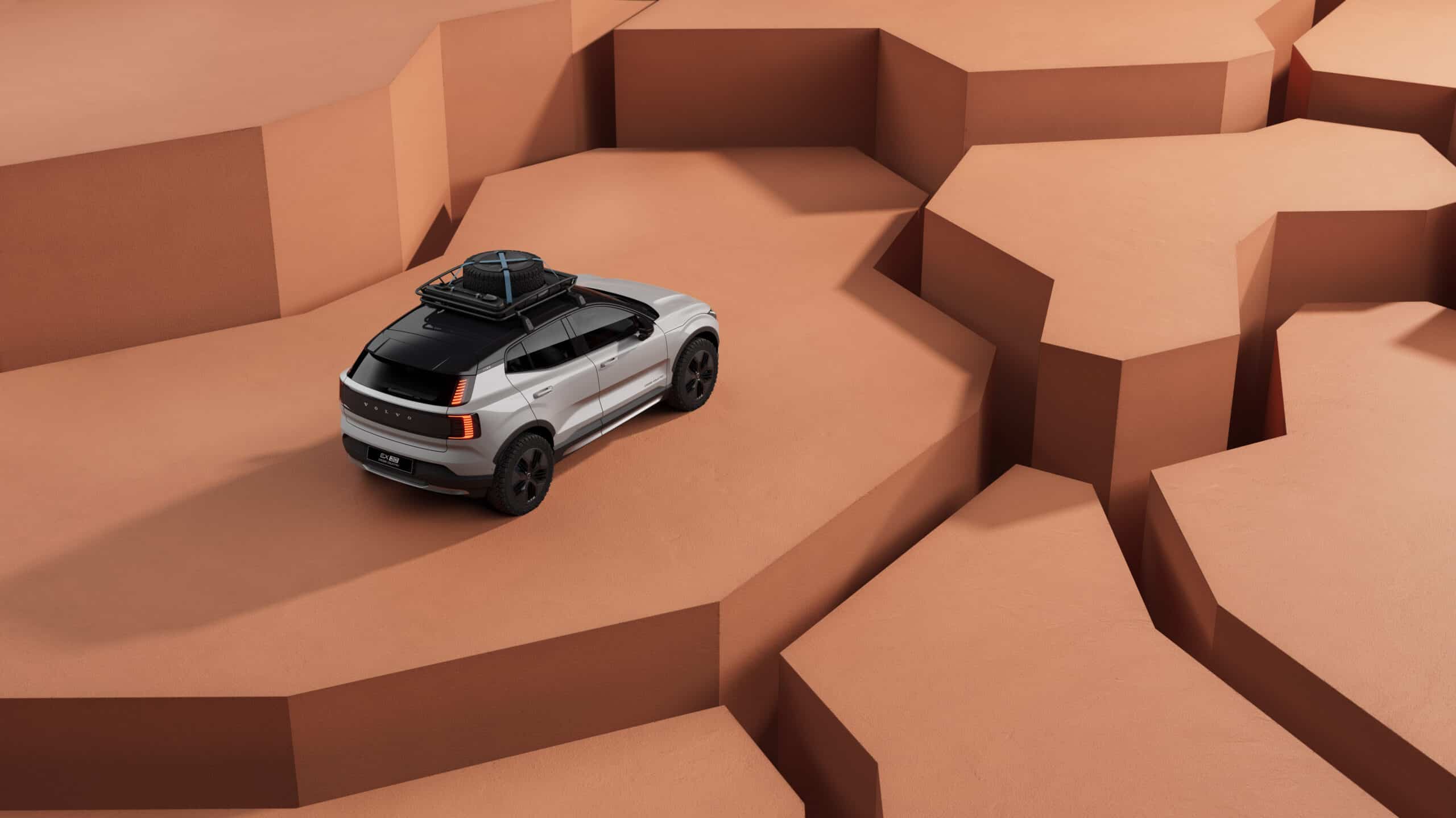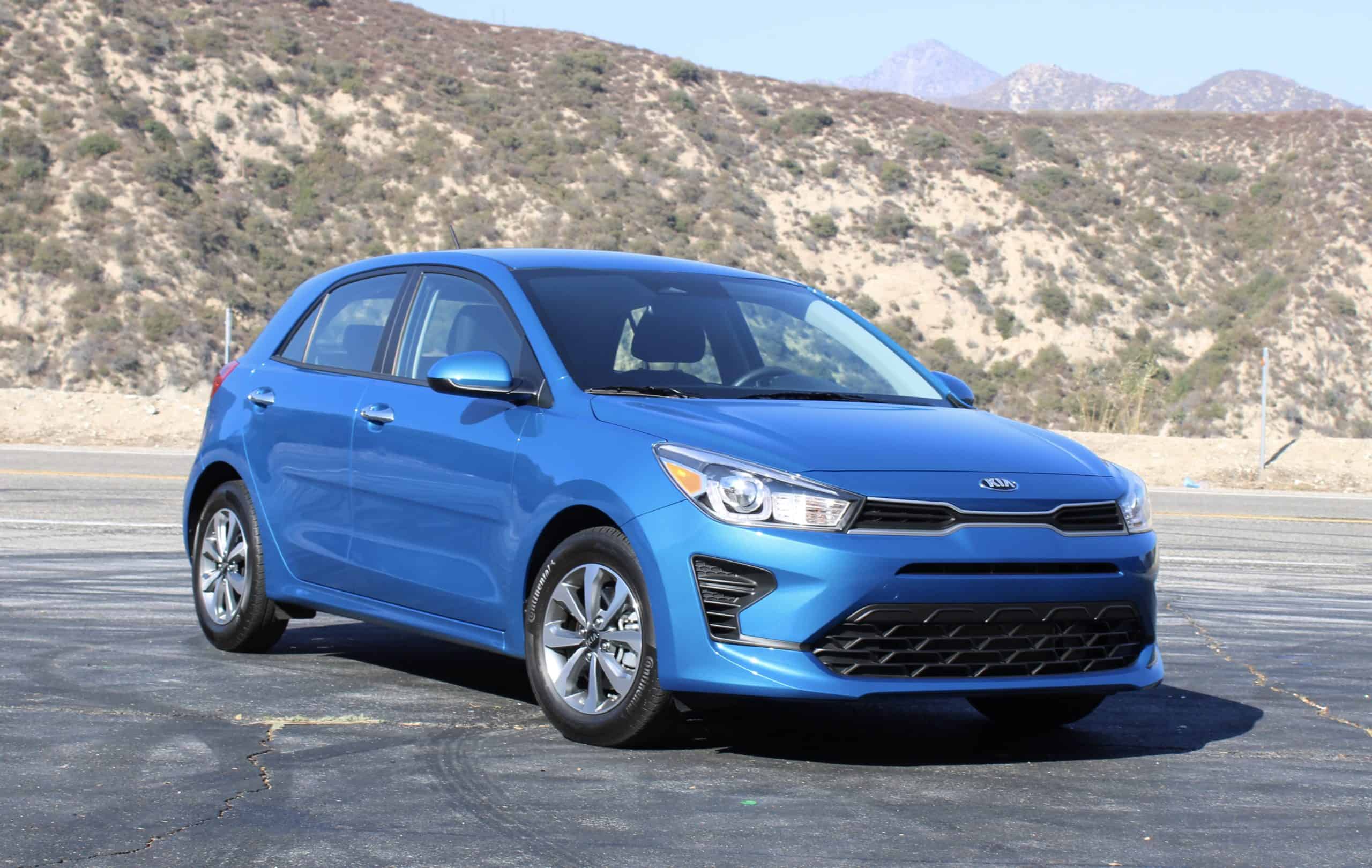

If you’re in the market for a subcompact car, your choices are slim. With the segment declining rapidly due to the crossover boom, there aren’t many to choose from. The 2021 Kia Rio is one of the last entrants alongside the Hyundai Accent, Nissan Versa, Mitsubishi Mirage, and the soon-to-de-discontinued Chevrolet Spark. Those looking for a hatchback will see their choices dwindle further down to two as the Spark exits after the 2022 model year. The Rio has long been a stand-out because of how well it balances content and affordability. Is that still the case? Let’s take a closer look.
The 2021 model year is a refresh for the Kia Rio, which gives it subtle design tweaks like a revised grille. You also lose the fog lights, which were available on the upper trims for the last few model years. Kia’s new port-injected 1.6-liter four-cylinder carries over unchanged with 120 hp and 112 lb-ft of torque. A CVT remains your only transmission option while EPA fuel economy ratings are excellent at 33/41/36 mpg city/highway/combined. Inside, you get a new 8.0-inch touchscreen with wireless Apple CarPlay and Android Auto on all models. Additional convenience features like keyless entry/start, automatic climate control, and LED headlights are now available on the S trim. Furthermore, the S Technology package now includes lane-keeping assist, pedestrian detection, steering assist, and driver attention alert, in addition to forward collision warning and front automatic emergency braking. As a result, the value proposition on the Rio has gotten stronger thanks to the additional tech and convenience features that Kia made available.
When it comes to design, the Kia Rio veers on the conservative side. Think more along the lines of a shrunken Volkswagen Golf instead of the extroverted styling you find in sister brand Hyundai’s car lineup. The upright greenhouse gives the Rio a more conventional two-box look, giving it plenty of usable space a good visibility out every direction. Of the two body styles, the hatchback is the most attractive one because it has best proportions. Although it’s longer, the sedan’s trunk looks like it got tacked on to the upright greenhouse at the last minute, giving the car an awkward side profile that dates it significantly.
Kia doesn’t just give you content by piling on the features. The Rio drives quite nicely and makes you realize the standard transportation doesn’t need to feel like a penalty box. Like its larger siblings, the Rio benefits from great suspension calibration; it’s zippy and feels right at home getting tossed around on a winding road. Even with the narrow 185/65/R15 tires, it carves through turns gleefully. The tires are one of its weaknesses because they can’t handle everything the chassis can. A slightly wider tire could easily solve that without affecting the car’s fuel economy. One benefit of the skinny tires is in noise levels because they don’t make significant amounts of roar even over poorly maintained surfaces. The thick sidewall keeps the Rio’s ride on the compliant side; together with the suspension, it does a great job isolating the cabin, especially by subcompact car standards.
Obviously, with only 120 hp and 112 lb-ft of torque, the Rio isn’t quick. However, since it weighs only 2,738 pounds, it feels adequately powered. Credit the CVT for getting the most out of the engine’s limited output. The best part? Hyundai and Kia’s CVT is snappy and feels natural. There’s no rubber band effect and it quickly does what you want when you put your foot down. In Sport mode, the powertrain responds even quicker, immediately bringing the engine to its sweet spot and enabling the car to get out of its own way promptly.
For its size, the Rio is surprisingly roomy. Four average-sized adults can fit in the car comfortably but five would be a pinch because of the car’s narrowness. The cargo area is generous but you don’t get a flat floor when you drop the 60/40 split-folding rear seatbacks. If you’re looking for more cargo capacity, consider moving up to a compact hatchback or a subcompact crossover that veers on the larger end of the spectrum. As expected of a vehicle that starts under $20,000 the Rio has a lot of hard plastic in the cabin. Kia, however, did a nice job making sure everything you touch still feels nice. The door-mounted armrests, however, could use padding because they’re quite hard.
Our test car was a 2021 Kia Rio S hatchback, which is the one to get if you ask us. The sedan is less expensive because it’s also available in the LX grade but it’s also less versatile and longer by 13 inches (the Rio hatch is 160 inches long). With an as-tested price of $19,205, this car is a steal. Although it lacks all the other driver assists you’d find in a Nissan Versa and it doesn’t have some of the creature comforts found in the Hyundai Accent like a telescopic steering wheel, heated front seats, and the hands-free smart trunk, the Rio fights back with better road manners and practicality. No, you can’t load it up to the brim like you can some of its competitors but in return, you get a subcompact car that’s better polished and more satisfying to own and drive because of the extra attention paid to chassis and powertrain refinement. Kia proves once again that it knows how to give you a strong value proposition. It’s not just about the features the car comes with anymore, it’s about the whole package: the driving experience, practicality, price, all of it.




